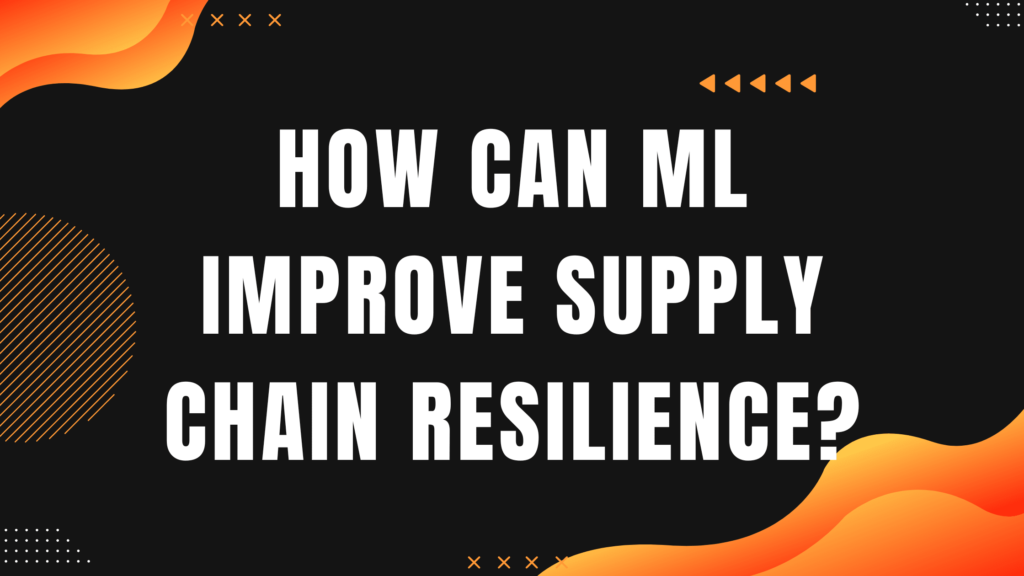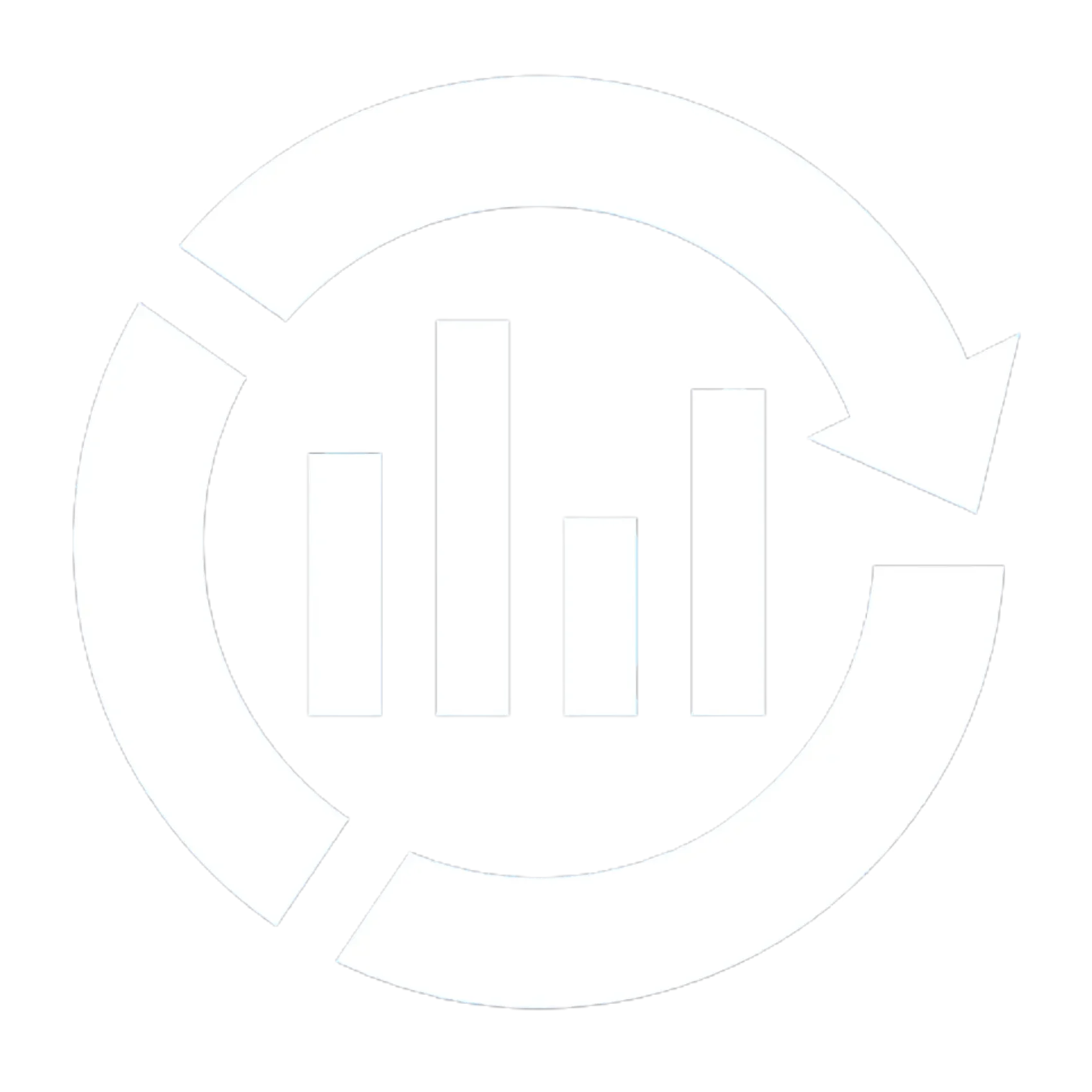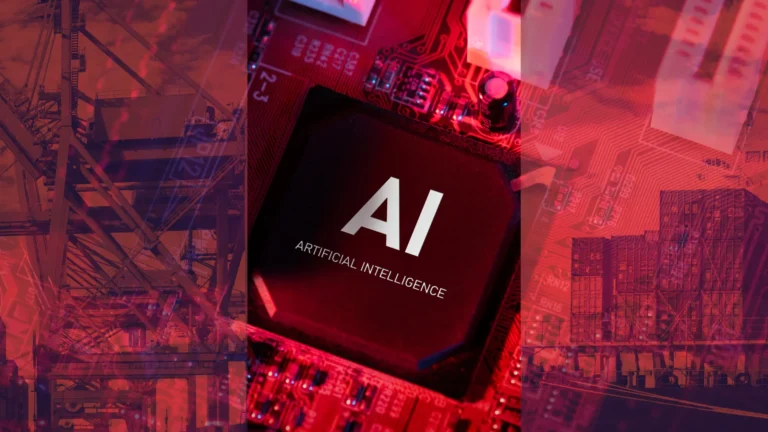If the pandemic, port blockages, and climate disruptions taught us one thing, it’s that supply chains break easily. For decades, companies chased efficiency: fewer suppliers, leaner inventory, just-in-time logistics. It worked—until it didn’t.

Today, the conversation has shifted from efficiency at all costs to resilience at all costs. And that’s where machine learning (ML) has quietly become a game-changer. Unlike rigid forecasting models or gut-feel planning, ML thrives on messy, real-world data. It doesn’t just react to problems; it learns, adapts, and often prevents disruptions before they hit.
So how exactly can ML improve supply chain resilience? Let’s break it down.
Adaptive Demand Forecasting
Traditional forecasts collapse when consumer behavior swings wildly (remember the sudden toilet paper shortage of 2020?). ML models integrate not just historical sales but also live signals like search trends, weather, and social chatter.
How it builds resilience: Helps businesses pivot quickly instead of drowning in stockouts or overstock.
Example: Walmart has used ML-based demand sensing to better predict buying surges in essentials, adjusting replenishment overnight.
Predictive Risk Management
Resilient supply chains don’t wait for disasters; they anticipate them. ML algorithms process signals from news feeds, weather alerts, and port congestion trackers to flag risks in advance.
How it builds resilience: Gives companies a head start to reroute shipments or secure alternate suppliers.
Example: Maersk uses AI-driven control towers to track global shipping disruptions and reroute containers when bottlenecks appear.
Smarter Inventory & Safety Stock
Static “safety stock” rules often fail during volatile times. ML learns demand variability and supplier lead time shifts, then dynamically recalibrates buffer levels.
How it builds resilience: Keeps the right balance—enough stock to absorb shocks, without choking cash flow.
Example: Automotive firms leaned on ML models during the semiconductor shortage to reallocate scarce chips across plants and avoid full shutdowns.
Supplier Reliability Scoring
Not all suppliers are equally resilient. ML evaluates supplier performance beyond price—factoring in delivery history, financial stability, and external risk indicators.
How it builds resilience: Avoids dependency on suppliers most likely to fail during crises.
Example: Pharmaceutical companies use ML scoring to identify fragile suppliers and proactively diversify sourcing for critical drugs.
Dynamic Logistics & Routing
Disasters don’t warn you before they shut highways or ports. ML combines GPS, weather, and carrier data to recommend alternate transport routes in real time.
How it builds resilience: Keeps goods flowing even when original routes collapse.
Example: UPS uses ML-powered “ORION” routing software to replan deliveries daily, cutting delays and fuel use.
Quality & Fraud Detection
Resilience isn’t just about moving goods—it’s also about trust. ML detects anomalies like counterfeit products, fraudulent invoices, or abnormal shipment patterns.
How it builds resilience: Reduces hidden risks that undermine supply continuity.
Example: Electronics firms use ML to spot counterfeit chips before they reach production lines, preventing costly recalls.
Workforce & Asset Continuity
People and assets keep supply chains alive. ML forecasts labor shortages, predicts equipment breakdowns, and optimizes schedules.
How it builds resilience: Maintains service levels even during peak strain.
Example: Last-mile delivery platforms like Swiggy and Instacart use ML to predict courier attrition and adjust hiring before demand spikes.
Digital Twins for “What-If” Stress Tests
Digital twins powered by ML simulate entire supply chains, testing responses to hypothetical crises like factory shutdowns or port strikes.
How it builds resilience: Prepares companies with playbooks before disruption hits.
Example: Consumer goods giants build ML-driven twins of their networks to run scenarios—like “What if our Vietnam factory closes for two weeks?”—and design mitigation plans in advance.
Real-World Examples of Machine Learning Improving Supply Chain Resilience
Walmart – Demand Sensing During Panic Buying
When panic-buying emptied shelves during the early days of COVID-19, traditional forecasting tools failed. Walmart leaned on ML-driven demand sensing that analyzed point-of-sale data, online search behavior, and local buying patterns. This allowed them to shift inventory quickly across regions and restock essentials faster than competitors, minimizing stockouts.
Maersk – Anticipating Global Shipping Disruptions
The world’s largest container shipping company, Maersk, uses AI and ML in its digital control towers to track disruptions such as port congestion, strikes, and extreme weather. By processing live feeds of maritime traffic and port data, their systems can proactively reroute vessels. This foresight keeps cargo moving even when traditional logistics networks stall.
Automotive Manufacturers – Navigating the Chip Shortage
The semiconductor shortage threatened to bring auto production to a halt. Leading automotive OEMs applied ML models to prioritize chip allocation across plants. By analyzing production schedules, demand forecasts, and supplier risk, these systems helped manufacturers decide which product lines to keep running—maintaining revenue flow when competitors were forced into shutdowns.
Pharmaceutical Industry – Securing Supplier Reliability
Drug companies rely on thousands of suppliers worldwide. During the pandemic, some suppliers collapsed under pressure. Pharma leaders began using ML algorithms to score suppliers based on delivery performance, financial health, and external risk factors. This helped them diversify sourcing and avoid dependence on vulnerable vendors, ensuring continuity in critical drug production.
UPS – Smarter Last-Mile Logistics
UPS’s “ORION” system is powered by machine learning and recalculates optimal delivery routes daily, taking into account traffic, weather, and package volume. During floods, snowstorms, or fuel spikes, ORION reroutes drivers in real time to keep deliveries on track. This not only improves resilience but also reduces costs and carbon emissions.
Electronics Manufacturing – Detecting Counterfeit Parts
Counterfeit electronic components are a silent threat to supply chain integrity. Leading manufacturers deploy ML anomaly detection systems that scan procurement records, supplier histories, and sensor data from shipments. These models flag suspicious parts before they enter assembly lines, preventing costly recalls and production halts.
Swiggy & Instacart – Workforce Resilience in Last-Mile Delivery
In last-mile logistics, driver shortages can cripple service. Platforms like Swiggy in India and Instacart in the U.S. use ML to predict driver attrition by analyzing log-in patterns, order acceptance rates, and earnings trends. This allows them to launch proactive hiring or retention campaigns before peak seasons, ensuring uninterrupted service for customers.
Consumer Goods Giants – Stress Testing With Digital Twins
Global consumer brands now use ML-powered digital twins—virtual replicas of their supply chains—to run “what if” scenarios. For example, they simulate factory closures in Vietnam or port strikes in Europe to see how disruptions ripple across their network. These insights feed into crisis playbooks, enabling faster responses when real disruptions strike.
Conclusion
Supply chains used to be designed for cost efficiency. Today, they need to be designed for survival. Machine learning doesn’t eliminate disruption—it makes networks smarter, faster, and more adaptable when the inevitable storm hits.
In short: resilient supply chains aren’t just built—they’re learned. And ML is the teacher.
Frequently Asked Questions (FAQs)
Because disruptions are now constant—companies that focus only on lean operations risk collapse when shocks occur.
Begin with demand forecasting and risk prediction—these deliver quick wins and build internal confidence.
No. ML cannot stop natural disasters, political conflicts, or pandemics. What it does is soften the blow by predicting risks early, helping companies respond faster and recover with less damage.
Retail, automotive, pharmaceuticals, and logistics lead the way. But any industry with complex, global supplier networks—such as consumer electronics or food supply—can gain tremendous value.
✅ Suggested internal link: Predictive Analytics in Supply Chain






